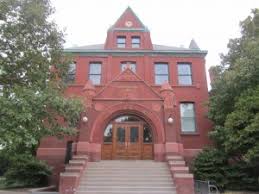Architecture Program

Architecture Program: Faculty Scholarly and Creative Activity
Document Type
Article
Date of this Version
2014
Citation
Published in International Journal of Aging and Human Development 78:4 (2014)
Abstract
This study examines the quality of life of the elderly residents of two rural Nebraska towns, both having experienced a large increase in population. The study examines how the residents’ perception of changes in the community affect their view of quality of life, and identifies determinants of psy-chological well-being for these elderly residents. The results are compared to the non-elderly resi-dents of these two communities for purposes of contrast. A face-to-face survey of the residents addressed physical, social/cultural, economic, and service issues. Both correlation and regression were used to analyze the data. The quality of life of the elderly residents in our study, in terms of satisfaction with the various components of general well-being—home and neighborhood, accessibility and adequacy of services (including transportation), health and safety—were very positive or satisfactory; this applies equally to the non-elderly population, with the exception of access to public transportation.


Comments
Copyright 2012 Elsevier Used by permission